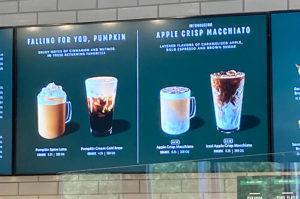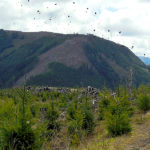 Sally Brown
Sally Brown
It was a big deal growing up when my mother had the backyard landscaped. Out went the old garage and in came the sod and the hemlock trees. Taking care of both became my job. We had an electric lawnmower with the attached bag to capture the grass clippings. The bag would fill a couple of times each mow and I would dump the slimy green grass into the garbage. Back then everybody knew that leaving the clippings on the turf would be the kiss of death for that green grass. Until we didn’t.

The advent of the mulching mower didn’t kill the grass by leaving the clippings on the lawn. In fact, adding the clippings back to the soil increased organic matter and recycled the nutrients.
Sometime after I had gone off to college and relinquished the mowing responsibilities a revolution occurred in the form of the mulching mower. Instead of dumping the clippings in the trash, they got chopped up and returned to the lawn. It turns out that this did not kill the lawn. Quite the opposite; adding the clippings back to the soil increased organic matter and recycled the nutrients. It turns out that the mulching mower — currently pretty much the only kind in use — is able to meter out the perfect quantity of grass to add back. Too little would be okay. That only means that you don’t water and fertilize obsessively or that cutting the grass is your favorite hobby.
It is too much that can be a problem. Too much has the potential to take away from the lush green appearance and even damage the sod. How can too much of a good thing be a problem? Understanding that is critical to an understanding of natural systems.
How Much Is Too Much?
What if I had taken that full bag of clippings and dumped it out on one corner of the lawn instead of putting it in the trash? It would not have been a pretty sight. That cut grass isn’t poison — to the contrary it is some tasty treat for the soil microbes. Over time they would have devoured it and made the system healthier. But during the process it is quite possible that the grass underneath the pile would have suffocated. The clippings are a high nutrient, high moisture blanket over the living grass that is trying to both breathe and get some sunlight to grow. It is quite possible that the grass underneath would have turned yellow while the cut grass on top started growing some really delightful molds (in the process of decomposition).
In most cases what we consider as environmental poisons are in fact too much of a good thing. The key factor to figure out in many of our systems is how much of a good thing is too much. How much will overload the system and how much is just right? The follow up question is if we do overload a system, how long will it take to recover?
Soils tend to be more forgiving than water in these cases. Water is very sensitive and does not take well to over feeding. You may remember pictures of eutrophication, or clear water turned emerald green. You may also remember pictures of fish kills. Aquatic systems tend to be systems that work best at near starvation conditions. Low levels of nutrients mean high levels of oxygen. Low levels of nutrients also mean a tightly controlled food chain. Add a little too much and that food chain goes out of whack. When that happens the oxygen levels go way down. Put those together and you get green water (excess algal growth due to excess nutrients) and dead fish (depletion of oxygen as a result of high levels of algal growth). The problem with this green water and with these dead fish is not any poison but too much food.
Starbucks Overload

Let me give an example. Prior to the Clean Water Act, wastewater plants would discharge effluent after primary treatment into lakes, rivers and oceans. Primary treatment is letting the water that comes into the plant sit still long enough for whatever is heavy enough to sink. It does nothing to remove nutrients and organic matter that is still floating. This stuff in the water isn’t poison, however disgusting it may sound to you. It is high strength food.
Think of it as the equivalent of a high-fat Starbucks blended beverage for your aquatic system. If you feed a lake one of these delights, it is not a problem at all. However, when half the city of Seattle is feeding a lake their lattes with the works, that is a major problem. Too much food for the system.

The discharge from secondary and tertiary wastewater treatment is much closer to a nonfat decaf beverage than any other option on the Starbucks menu. Inset photo courtesy of King County, WA
When that city’s worth of Starbucks (aka effluent after primary treatment only) was added directly to waters, those waters would get overloaded. Visibility went down, algae went up. Oxygen went down as the nutrients went up. When this happened to lakes where water exchange is limited, the damage was worse and the recovery took longer. Right here in Seattle, original home of Starbucks, discharge of partially treated wastewater into Lake Washington made the water stink and turn brown and stopped the kids from swimming. This happened in the mid 1960s and prompted the city to pass funding for treatment plant upgrades that stopped discharge of this Starbucks special blend into the lake. Over time, the lake has recovered. A few years after this incident, the water quality was just fine for swimming and it has remained so ever since.
Remember, this was not poison but too much food. The water from the treatment plants is now put through secondary and tertiary treatment and pumped out to Puget Sound. Secondary treatment is the equivalent of eating on steroids. The water is pumped with enough oxygen that the microbes can eat as much and as fast as they want. As a result, the discharge from secondary and tertiary treatment is much closer to a nonfat decaf beverage than any other option on the Starbucks menu. In addition, the Sound has a lot more water and a lot more water flow and is better able to deal with cases of excess. In fact, north of Seattle, in scenic Victoria, British Columbia, they were still discharging the wastewater equivalent of Starbucks full fat caramel latte with whipped cream into the Salish Sea with a treatment plant that didn’t go past primary. The argument there was that the nutrients were beneficial to the ocean ecosystem and not a detriment at all. That is thankfully changing.
A Diet Of Recycled Organics

Excess amounts of phosphate can cause algae blooms to occur. Inorganic forms of phosphate pose the greatest risk to water quality. ©iStockphoto.com/Sloot
While change is afoot in Victoria, across the U.S. there is still a problem with overfeeding water bodies. The dead zone in the Gulf of Mexico is one example. Algae in Lake Erie is another. In Florida, it is excess phosphorus (food) that is hurting the system, not any type of poison. For these examples, as is often the case, the excess in these systems comes from synthetic fertilizers used in excess. Replacing those with recycled sources including composts, manures, and biosolids is a critical tool to putting water systems on a very necessary diet. Recycling organics makes use of existing food supplies rather than manufacturing more. The slow release nature of the food in organics also means that the soil stays well fed for longer and has less potential to release any excess.
In general, soils are much more forgiving than waters. They are able to eat more and pass it through more quickly. But even with soils, too much food can slow their capacity to carry out all of their requisite functions — namely growing plants. This will happen when many of the same conditions that hurt water occur. Not enough oxygen is the big one. If you add readily putrescible materials to soils, the soil fauna immediately start indulging, eating everything in sight and using up all of the air. They also don’t always eat a full meal, leaving partially decomposed residues that can be chemically reactive and not overly appealing to the plants that are trying to grow. They can also make the soil very salty. All of these factors can make it difficult for plants to grow, primarily the seeds that are trying to germinate. That is one of the reasons that composters often include seed germination tests to see if their compost is cooked enough for general use.
Over time, once those microbes have had their fill, let out a few burps and settle down for a snooze, the soil will be richer and ready to grow even better than before. It is just a question of time. For example, in a study we recently did we mixed food scraps stabilized with Bokashi (anaerobic fermentation) at high rates (200 tons/hectare) to two soils. Even though we waited 10 weeks, our first attempts to grow kale were a dismal failure. Several months later when we were up to planting swiss chard, some of the Bokashi soils grew better than almost every other treatment we tried.
The take home here is that if you want to feed high rates of organics to soils, make sure that you cook (compost) them first. If you want to add them to soils in the raw, then it is critical that you add only low rates. More of a season to taste than the full meal deal. It is not that you are adding poison to the soil. To the contrary you are feeding the soil. But overeating is not good for soils the same way it isn’t good for us. If you do overfeed the soil, make sure it has plenty of time to eat, burp and nap before you ask it to grow anything.
Sally Brown, BioCycle’s Senior Adviser, is a Research Professor in the College of the Environment at the University of Washington.










